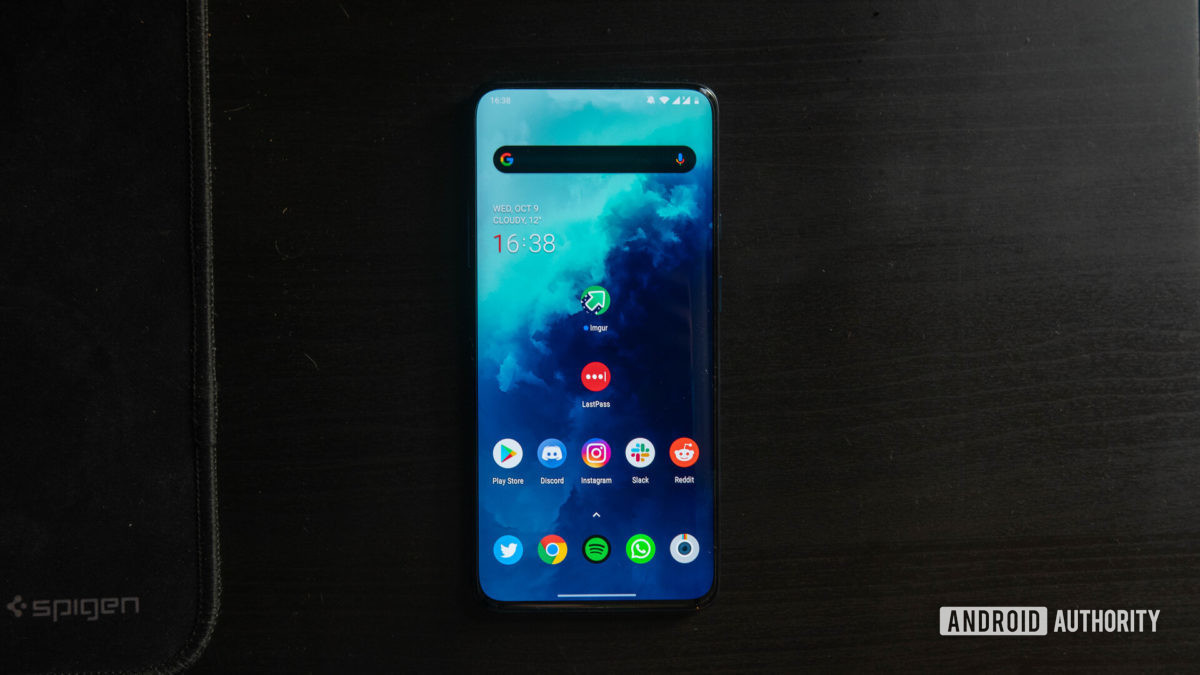
The Galaxy Note Edge was the very first phone with an edge display way back in 2014. Its single-edge design never really took off, but Samsung refined the concept the following year, introducing a dual-edge design with the Galaxy S6 Edge. Since then, the curved screen has become a feature on flagships from several manufacturers, including OnePlus and Huawei. So with that in mind, we take a look at the best phones with edge displays!
Editor’s note: We’ll be updating this list of the best phones with edge displays regularly as new devices launch.

Samsung’s Galaxy Note line was the original curved screen smartphone, and that tradition continues with the all-new Galaxy Note 10 and Galaxy Note 10 Plus. You get a 6.8-inch QHD+ Super AMOLED screen on the Galaxy Note 10 Plus, while the vanilla Note 10 delivers a 6.3-inch FHD+ Super AMOLED panel. Either way, you’re getting a center-mounted punch-hole cutout hosting a 10MP selfie camera.
The Note 10 series packs the Snapdragon 855 or Exynos 9825 chipset under the hood — depending on the region. The phones also offer an upgraded S Pen, IP68 water/dust resistance, and an in-display fingerprint sensor, among other things.
The devices differ in terms of battery size, RAM, and storage. Expect a 3,500mAh battery, 8GB of RAM, and 256GB of storage in the Note 10. The Note Plus serves up a 4,300mAh battery with 45-watt fast charging, 12GB of RAM, and 256GB or 512GB of storage. It also has an extra camera — a ToF sensor — at the back. One thing you won’t find on the phones, however, is a 3.5mm port.
Samsung Galaxy Note 10 specs:
Samsung Galaxy Note 10 Plus specs:

The Samsung Galaxy S10 and the larger Galaxy S10 Plus both sport curved Dynamic AMOLED displays with QHD+ resolution. The one on the Plus model comes in at 6.4-inches, while the display of its smaller brother measures 6.1-inches.
In terms of specs, the two phones are very similar. Both sport the same chipset, have the same rear cameras, and come with an in-display fingerprint scanner. They also have a headphone jack on board and support expandable storage, among other things. However, in addition to the larger display, the S10 Plus also has a larger battery, features two front cameras instead of one, and comes with as much as 12GB of RAM.
Thanks to their top-of-the-line specs and a great design, the Galaxy S10 and S10 Plus are among the best phones with edge displays you can currently get. However, they are expensive — check their prices via the button below.
Samsung Galaxy S10 specs:
Samsung Galaxy S10 Plus specs:

The Huawei P30 Pro has a big 6.47-inch dual-curved OLED screen with Full HD+ resolution. It’s aimed at demanding users who are into photography. The phone’s four rear cameras capture fantastic images, even in low-light conditions thanks to Huawei’s Night Mode.
Huawei’s flagship comes with loads of other high-end features including an in-display fingerprint sensor and reverse wireless charging. The battery is massive at 4,200mAh and offers as much as 10 hours of screen-on time, according to our testing. Other specs and features include an IP68 rating for protection against water and dust, the Kirin 980 chipset, and as much as 8GB of RAM.
The phone looks gorgeous with its metal and glass body that comes in a few eye-catching gradient colors. It has a notch, which not everyone is a fan of, but it’s super small and doesn’t feel obtrusive at all. It’s definitely among the best phones with edge display you can get. And since it was released before the Huawei ban debacle, future software updates are expected to be unaffected.
Huawei P30 Pro specs:

The curved OLED display of the OnePlus 7T Pro measures 6.67-inches and offers QHD+ resolution. It also has a 90Hz refresh rate that makes animations and movement look a lot more fluid compared to 60Hz screens on most high-end phones.
The OnePlus 7T Pro packs the latest Snapdragon 855 Plus chipset along with as much as 12GB of RAM under the hood if you go with the McLaren Edition. It also features an in-display fingerprint sensor, a pop-up front-facing camera, and three cameras at the back.
Related: All the 2019 OnePlus phones compared
However, the handset does have a few drawbacks. It doesn’t have an official IP rating, lacks a headphone jack, and doesn’t support wireless charging. Nevertheless, it’s still one of the best phones with an edge display you can get.
The OnePlus 7 Pro is also a great option for those looking for a phone with a curved screen. It has the Snapdragon 855 chipset instead of the 855 Plus and comes with a slightly smaller battery. Other than that, it’s pretty much the same as the 7T Pro, which is good news for US buyers as the OnePlus 7T Pro isn’t coming to North America.
OnePlus 7T Pro specs:

ZTE has gradually been upping the ante when it comes to high-end phones, starting out with the affordable Axon 7 in 2016 and delivering the rather intriguing Axon 9 Pro last year. The Axon 10 Pro is its latest flagship phone, and it’s certainly in the running for one of the more underrated devices of 2019.
The Axon 10 Pro offers most of the expected bells and whistles for a flagship in 2019. That means a Snapdragon 855 chipset, a 4,000mAh battery with Quick Charge 4.0, a triple rear camera setup (48MP/20MP ultra-wide/8MP 3x telephoto), and a 6.47-inch OLED screen (FHD+ with a waterdrop notch).
Other notable features include a 20MP selfie camera, wireless charging, IP53 splash resistance, and an in-display fingerprint sensor. Just don’t expect a 3.5mm port.
05/11/2019 10:00 PM
05/11/2019 08:00 PM
05/11/2019 06:53 AM
05/11/2019 07:45 PM
05/11/2019 06:39 PM
05/11/2019 11:00 AM
05/11/2019 07:44 PM
05/11/2019 09:28 PM
2014 © Canadian apps and news